The Rise of New Indie Artists in Modern Music
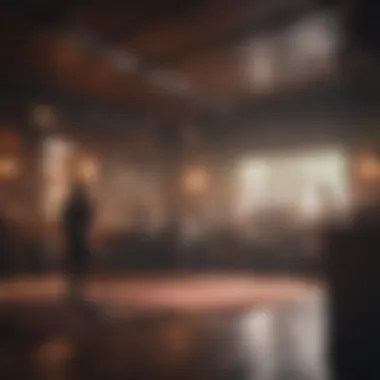

Intro
In the realm of contemporary music, indie artists have carved out a distinct niche, enriching the auditory landscape with their unique blend of creativity and authenticity. As the traditional music industry grapples with change, these artists emerge as not just creators but also as innovators, pushing boundaries that often seem rigid. The significance of new indie artists is undeniable; they reflect diverse experiences and stories, resonating with audiences searching for relatability in their listening experiences.
What makes indie music so compelling is the variety and uniqueness of its creators. The diversity found within their musical expressions touches on genres ranging from folk and rock to more experimental soundscapes. Rather than adhering to mainstream conventions, indie artists often prioritize personal storytelling, experimentation, and individualistic production methods. They challenge the status quo, reassessing the purpose and delivery of music in today’s fast-paced digital world.
As we journey through the profiles of these artists, we’ll uncover their backgrounds, influences, and the ways they navigate the music industry. We'll also analyze their songs, breaking down themes, lyrics, and how their instrumentation and composition diverge from established norms. This exploration promises to provide not only a glimpse into the indie music culture but also a platform for understanding how these artists manage to thrive in a competitive landscape.
Artist Profile
Biography and Background
Each indie artist carries a story, a thread woven into the fabric of their music that speaks to their roots and experiences. Take the case of Phoebe Bridgers, who turned her personal struggles and observations into beautiful melodies that resonate deeply. Having grown up in Los Angeles, Bridgers immersed herself in a world of varied musical influences, from folk legends like Elliott Smith to the raw artistry of Conor Oberst. This background shapes her songwriting, wherein she weaves vulnerability and honesty seamlessly throughout.
Similarly, Sufjan Stevens showcases a distinctive background with a tapestry of experiences rooted in different cultural contexts. Growing up in Michigan and influenced by various musical styles, Stevens approaches songwriting like a painter with a canvas, blending various colors and textures to form a rounded story. His life experiences bleed through his lyrics, giving a glimpse of his journey while inviting listeners to reflect on their own narratives.
Major Influences and Inspirations
Indie artists do not exist in a vacuum; their sounds often reflect a constellation of influences that shaped their musical perspective. While many lean towards genre-defining predecessors, particularly significant are the unconventional influences that color their work. In the prominent case of Tame Impala, Kevin Parker draws on everything from psychedelic rock to dance music, creating a seamless blend that redefines the auditory experience.
"Influences can act as a double-edged sword, either confining or liberating an artist, depending on how they react to them."
The cross-pollination of ideas thrives in the indie scene. Artists often take cues from visual arts, literature, and even personal relationships, allowing their environment to steer their creative compass. By exploring the intersections of sound and experience, these artists breathe life into their work, creating a dedicated space for exploration and growth.
In piecing together the mosaic that is indie music, we grasp crucial aspects that define not just the sound, but the culture and its evolution over time. These elements form the backbone of every track and every project, culminating in a vibrant music community that thrives on diversity and authenticity.
The Rise of Indie Artists in Contemporary Music
In recent years, the indie music scene has transformed significantly, bringing with it a wave of new artists who are challenging the status quo of the traditional music industry. The rise of these indie artists is not just a trend; it represents a broader shift in how music is produced, consumed, and appreciated. This section delves into the elements that have contributed to the ascendance of indie artists today.
One significant factor is the availability of digital platforms that allow musicians to distribute their work without the need for major record labels. Today, artists like Phoebe Bridgers and Sufjan Stevens can release music directly to fans via streaming services and digital downloads. This means that artists are no longer at the mercy of corporate gatekeepers who traditionally held the reins in the music industry.
Moreover, the internet and social media have significantly influenced the way artists connect with their audience. Information overload is the name of the game, and it’s no longer enough for artists to simply release songs. Engaging content on social media becomes vital to build a loyal fan base.
Another aspect to consider is how indie artists are breathing new life into various genres. They are not confined by typical genre boundaries. The blending of rock, folk, and electronic music, for example, has created an exciting sound landscape where fresh ideas can flourish.
"The beauty of indie music lies in its raw and authentic expression. It's like a breath of fresh air in a sometimes stale music industry."
Defining Indie Music
At its core, indie music embodies a spirit of independence, autonomy, and creativity. The term "independent music" has evolved from its original meaning associated with small, independent record labels to encompass a broader movement of artistry that prioritizes individual expression over commercial success. Artists such as Tame Impala and Caroline Polachek exemplify this independence.
It is worth noting that indie music can span an array of genres. From indie rock to folk and electronic, the term often encapsulates an ethos rather than a specific sound. Artists often reach back to their influences—be it the authenticity of old-school folk or the experimental sounds of avant-garde music—to forge something uniquely their own.
Historical Context and Evolution
The indie music movement has deep roots extending back to the 80s and 90s, emerging as a response to an increasingly commercialized music landscape dominated by major labels. Bands like The Smiths and Sonic Youth played a critical role in shaping this movement. Their music served as the soundtrack for a generation disillusioned with mainstream trends.
The digital age marked a pivotal change for indie artists. With the advent of the internet, musicians gained access to an unprecedented platform for distribution. This democratization allowed for new voices to emerge, who previously could not gain traction under the traditional system.
In the years that followed, platforms such as Bandcamp and SoundCloud became indispensable in fostering this community. Artists began to share and promote their work, making it easier for listeners to discover hidden gems in the vast ocean of music available online.
As we chart a course through the evolving landscape of indie music, it becomes clear that the rise of indie artists is not merely a phenomenon to be noted but a significant shift that has altering the very fabric of how music is created and experienced today.
Influences on New Indie Artists
The world of indie music is a colorful tapestry woven from various threads of influence. New indie artists often find themselves crafting their sound amidst a backdrop of diverse musical styles and cultural tides. These influences significantly shape their artistic direction and the messages they convey through their music. An exploration of these influences not only enriches our understanding of indie music but also highlights the dynamic interplay between artists and the environments in which they create. Let's dig deeper into the factors that mold their artistry.
Musical Influences
When talking about musical influences, one of the most tangible aspects for indie musicians is the array of genres surrounding them. Unlike mainstream artists, indie musicians often feel less constrained by commercial expectations, allowing them to pull inspiration from a broader range of styles. For instance, an indie artist might mesh folk melodies with hip-hop beats, or intertwine punk energy with classical instrumentation. This not only showcases versatility but also resonates with listeners who crave uniqueness.
Common musical influences include:
- Folk and Americana: Artists like Iron & Wine or Sufjan Stevens often inspire new indie musicians to embrace storytelling through their lyrics.
- Alternative Rock: The sounds of bands such as Modest Mouse or The Strokes encourage experimentation with sound layers and vocal techniques.
- Electronic Genres: Indie artists like ODESZA or Porter Robinson show how blending electronic music can lead to fresh innovations in songwriting and production.
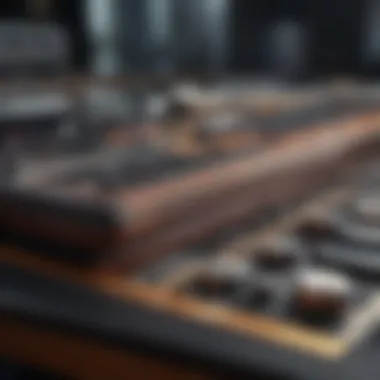
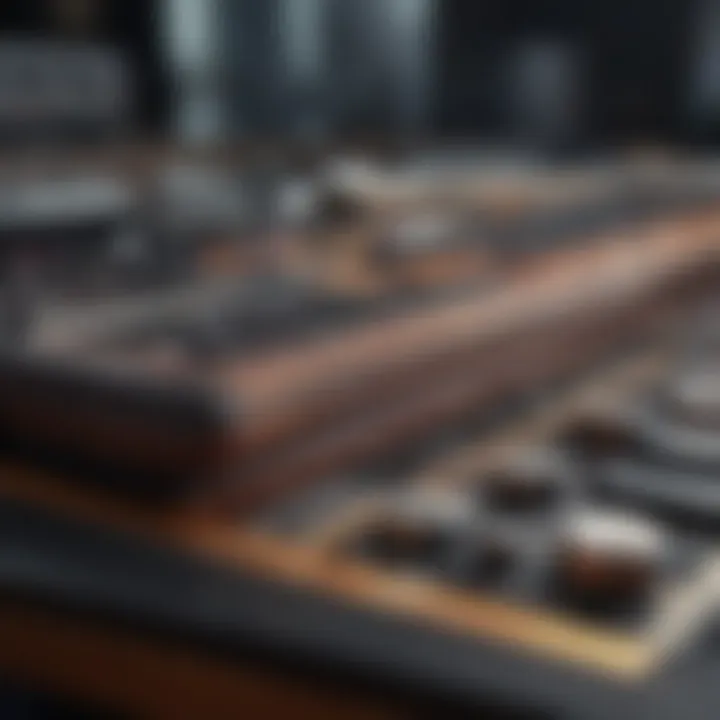
New indie musicians often listen to both well-known bands and more obscure acts, leading them to carve out their own niche in this rich musical landscape. Many draw from their heritage, introspecting their historical context to produce work that reflects their lives, while others simply follow the sonic breadcrumbs left by their predecessors, transforming and modernizing them in the process.
"Every artist is a pioneer in their way, navigating the labyrinth of past influences, and sculpting these legacy sounds into something fresh and reflective of personal experience."
Cultural and Social Factors
Indie artists don't just operate in a musical vacuum; they are deeply influenced by their cultural and social environments. The socioeconomic conditions surrounding them and the current societal issues serve as both backdrop and inspiration for their art. Consider the impact of social movements. Many artists today are weaving narratives into their songs about environmental concerns, mental health awareness, and social justice. This engagement ensures their music resonates with what listeners are experiencing in the world.
Here are some cultural factors that play a crucial role:
- Regional Influences: The geographic location significantly shapes the musical style. For example, Nashville's indie scene often leans towards country-folk, while cities like Berlin are rich in electronic soundscapes.
- Social Media Culture: Platforms like TikTok and Instagram have transformed how artists interact with fans, enabling them to share personal perspectives in real-time, influencing the lyrical content they produce.
- Collective Identity: Many indie artists create music as a way to voice collective experiences, enabling them to forge connections with their audiences, who often see their stories reflected in the lyrics.
The Creative Process Behind Indie Music
The creative process in indie music plays a vital role in determining the sound and identity of emerging artists. Unlike their mainstream counterparts, indie musicians often craft their work in ways that are deeply personal and steeped in authenticity. This organic artistry fosters a unique blend of imagination and real-world experiences. It gives artists the freedom to explore raw emotions and unfiltered storytelling, allowing them to connect with listeners on a more profound level. One of the key benefits of engaging with this creative process is that it nurtures not just individual talent but also sparks a sense of community among artists pursuing similar paths.
Songwriting Approaches
There are countless ways artists approach songwriting, but in the indie scene, the spotlight often shines on the authentic voice of the creator. Many indie artists experiment with various techniques when putting pen to paper—or, in modern terms, finger to keyboard.
- Personal Narrative: A popular method involves weaving personal stories into lyrics. Artists draw inspiration from their life experiences, observing everyday moments, and translating them into melodies. This connection often resonates deeply with audiences, as the narrative feels relatable and forthright.
- Stream of Consciousness: Another method is free-writing or a stream of consciousness approach, where artists jot down thoughts as they come. This spontaneity can produce unexpected gems, highlighting feelings or ideas that might go unnoticed in more structured songwriting.
- Collaborative Efforts: Many indie musicians collaborate with other creatives, valuing the diversity of thought brought in by different perspectives. This blending of styles can innovate traditional songwriting and result in unique, hybrid sounds.
"Indie music is, at its core, about authenticity. It's a space where musicians can explore their unique sound and voice without the constraint of commercial expectations."
Production Techniques
Once the songwriting aspect is settled, the next significant step involves production techniques. In the indie realm, production often reflects the individuality of the artist rather than polished commercial formulas that dominate mainstream music. Here are some prevalent production techniques in indie music:
- Home Recording: With advancements in technology, many indie artists turn their bedrooms or basements into makeshift studios. This means recording equipment like inexpensive microphones and digital audio workstations enables them to produce tracks that evoke their vision without financial strain.
- Lo-fi Aesthetics: There’s a growing trend around embracing a lo-fi sound—flaws, imperfections, and all. This creative choice adds a rawness to the music, capturing the essence of the indie spirit. Interestingly, some songs might even incorporate ambient sounds or field recordings, adding depth to the listening experience.
- DIY Mixing and Mastering: Many indie artists take the reins of their mixing and mastering processes. While there’s a learning curve, this hands-on approach gives them total control over the final product. Resources and online communities have blossomed, allowing aspiring producers to share tips and learn from each other through platforms like Reddit and Facebook.
With these techniques, the indie music landscape continues to evolve, reflecting the soul of its creators. In a world where self-expression is paramount, the creative process behind indie music serves as the heartbeat of a highly personalized artistic journey.
Exploring Genre Blending
The notion of genre blending in indie music occupies a pivotal role in modern artistic expression. It emphasizes the freedom that new indie artists possess to traverse not just between different musical styles but also through various cultural and social landscapes. In a world filled with preconceived notions of music categories, indie artists often challenge the boundaries, creating unique soundscapes that reflect their diverse influences. This kind of exploration leads to a rich tapestry of sounds, compelling listeners to consider genre as more of a fluid concept rather than a fixed classification.
Incorporating genre blending not only enhances the creative avenues available to artists, but it also fosters a broader appeal. Fans of various genres can find common ground in the music, allowing for unexpected collaborations and fanbases. Moreover, blending genres encourages artists to experiment, which can lead to innovative techniques that push the envelope in production and songwriting. The significance of delving into these sonic landscapes cannot be understated, as it plays a fundamental role in shaping the future direction of music.
Cross-Genre Collaborations
Cross-genre collaborations have become something of a hallmark within the indie music scene. An artist like Billie Eilish exemplifies this by melding pop, electronic, and even elements of jazz, creating a sound that is wholly her own yet resonates across different audiences. When artists step outside their comfort zones, they not only bring fresh perspectives to their work but also introduce their listeners to new sounds and styles.
One of the exciting aspects of cross-genre collaborations is the synergistic effect it can have on the music itself. For instance, when a punk rock band collaborates with a classical musician, the fusion of energy and elegance can produce works that neither artist could have crafted alone. It offers an opportunity for growth and exploration, providing both artists with the chance to learn from each other’s techniques and approaches.
"Musical collaboration can transcend basic genre constraints and produce art that speaks to the human experience, much broader and richer than labels suggest."
Innovative Soundscapes
In the context of indie music, innovative soundscapes are essential to creating memorable tracks that stand out in a crowded marketplace. Artists are increasingly utilizing technology to design sounds that were once unimaginable. For example, some artists may blend live instrumentation with synthesized elements, leading to a sound that feels both organic and surreal.
The beauty of innovative soundscapes lies in their ability to transport listeners to entirely new worlds. They can evoke strong feelings, tell stories, or even prompt introspection. Many indie musicians are experimenting with ambient music elements, incorporating field recordings, and unusual instruments into their work. This not only adds depth to the music but also caters to an audience that craves an experience rather than just a performance.
By pushing the envelope of sound, indie artists are crafting unique identities that reflect their personal experiences, cultural backgrounds, and artistic aspirations. This continuous evolution is what makes the indie music landscape so vibrant and dynamic, inviting fans to embark on an exciting journey with each new release.
The Role of Technology in Indie Music
In the rapidly evolving world of music, technology has metamorphosed the landscape for indie artists. With the old guard gradually relinquishing its grip, these fresh talents are harnessing the power of digital tools to carve out their own paths. From distribution to promotion, technology plays an integral role. Not only does it provide access to resources that were once the realm of major record labels, but it also fosters a community of artists who support and uplift one another in an ever-changing industry.
Digital Distribution and Streaming Platforms
Digital distribution and streaming are fundamentally reshaping how indie music reaches audiences. Gone are the days when an artist needed a record label to get their music into stores. Platforms like Bandcamp, Spotify, and SoundCloud enable independent musicians to upload, share, and monetize their work almost effortlessly. This shift not only democratizes music distribution but also allows for a more diverse range of sounds to emerge from diverse backgrounds.
Here are key aspects of digital distribution that indie artists must consider:
- Accessibility: Musicians can now reach global audiences without stepping foot in a major studio or signing a record deal. This opens up avenues for lesser-known genres to find their niche fan bases.
- Analytics and Feedback: Services like Spotify for Artists offer real-time data on who is listening to the music, the time of day, and even geographical locations. This helps musicians make informed decisions about touring, marketing, and connecting with fans.
- Revenue Streams: Through streaming services, artists earn royalties based on the number of plays their songs receive. This model, although somewhat controversial, represents a significant shift in how artists can financially support their endeavors, providing a steady income if managed correctly.
- Collaborative Opportunities: Platforms also enable artists to collaborate across borders. For instance, an indie musician in Brazil could easily work with a producer in Germany via digital means.
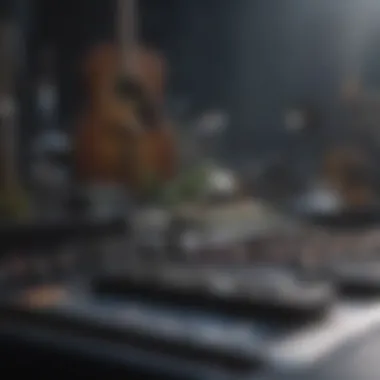
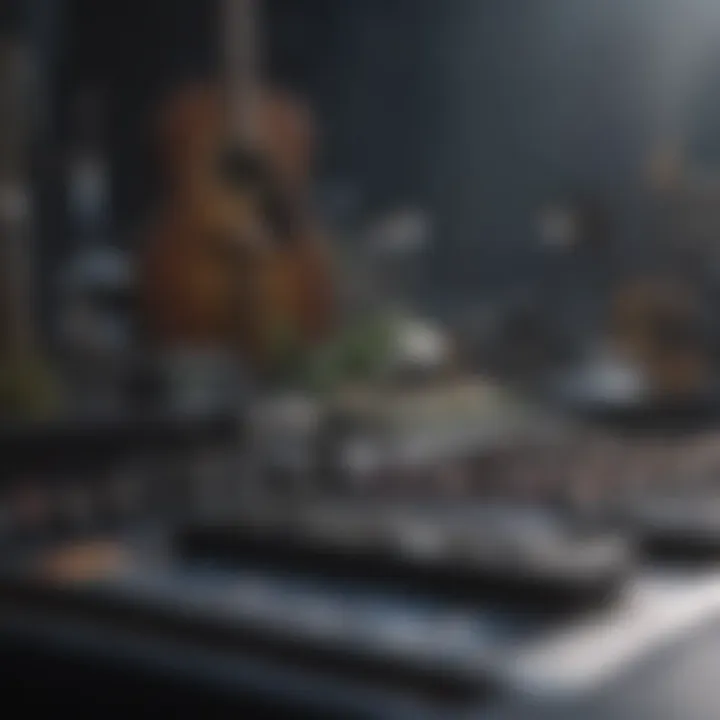
"Without the digital distribution channels, many indie artists would simply not be heard at all."
Social Media and Fan Engagement
Social media acts as the lifeblood for indie artists, facilitating a dynamic dialogue between musicians and their audience. While traditional promotional avenues might require a hefty budget, platforms like Instagram, TikTok, and Twitter allow for organic growth.
Key elements that underscore the significance of social media include:
- Direct Interaction: Artists can engage directly with their fans, receive feedback, and create communities around their music. This instant connection fosters a loyal fanbase, making fans feel like part of the journey.
- Content Creation: Indie artists can craft their narratives through music videos, behind-the-scenes glimpses, or even personal stories. Platforms that prioritize visual content, such as TikTok, enable creative expression and allow musicians' personalities to shine.
- Crowdfunding: Social media can serve as a platform for fundraising, where dedicated followers support projects through platforms like Patreon or Kickstarter. Successful campaigns often rely heavily on the artist's social media presence to spread the word.
- Viral Trends: Social media can propel indie music into the mainstream unexpectedly. An artist's track may go viral due to a challenge or meme, propelling them to wider recognition instantaneously.
As technology continues to evolve, indie artists must remain adaptive, embracing new tools and strategies to navigate the complex landscape of the music industry. This adaptability is key to sustaining their careers effectively in the long haul.
Marketing Strategies for Indie Artists
In the contemporary music landscape, marketing stands like a lighthouse guiding new indie artists through often turbulent waters. Unlike major label artists who can bank on financial muscle and established networks, indie musicians must carve out their own paths. Creative and strategic marketing can be the game-changer for them, not just in reaching their audience but also in building a lasting connection. Indie artists face unique challenges that require innovative solutions, and mastering marketing strategies is crucial for survival and growth.
The digital revolution has democratized the music industry in many ways. With tools like social media and various online platforms, indie artists have unprecedented access to a global audience. However, the abundance of choices can lead to noise, making it difficult for individual voices to resonate. This is where a well-thought-out marketing strategy becomes essential. It acts as a roadmap, helping artists navigate through various platforms, ensuring they reach their target audience effectively.
Building an Online Presence
Creating a robust online presence is the first step for any indie artist looking to take the world by storm. This means not just having profiles on all the popular platforms but also optimizing them to reflect one's unique artistic persona.
Artists need to embrace the identity they wish to project. They need to share snippets of their lives, thoughts on music, and behind-the-scenes looks at their creative processes. Here’s a checklist to establish that presence:
- Website: A centralized hub where fans can learn more, listen to music, and find tour dates.
- Social Media: Active engagement on platforms like Instagram, Twitter, and TikTok where music enthusiasts dwell.
- Content Creation: Regularly post videos, photos, and insights. Consistency is key!
- Mailing List: Building a list means direct access to fans without the algorithms determining visibility.
- Collaborations: Working with other artists can expose one to new audiences.
"In today’s world, your online presence often speaks louder than your music itself."
The goal of building an online presence is to create an authentic narrative that fans can connect with. The more relatable the artist feels, the more likely people will bond over their music. While building this presence might take time, the connections forged can prove invaluable.
Touring and Live Performances
Even with the rise of digital platforms, live performances remain an essential aspect of an indie artist's marketing strategy. They offer a direct personal connection and enable artists to engage with their fan base in a tangible way. Going on tour, whether big or small, opens doors to new opportunities and showcases the music, but it takes significant planning.
Here are some considerations to manage successful tours:
- Venue Selection: Choose places that cater to your music genre and fan base. Small, intimate venues can often pack a stronger punch than large arenas.
- Promotion: Use both online and offline methods to promote shows. Create event pages and invite local influencers to spread the word.
- Merchandising: Selling merchandise helps generate additional income and serves as promotional material even after the concert has ended.
- Networking: Live shows are great for meeting other artists, industry professionals, and fans. These connections can lead to future collaborations and opportunities.
- Feedback and Engagement: Post-show interactions provide invaluable feedback for artists. Listening to fans' input can help shape future performances and music.
Adopt these strategies, and indie artists won't just create music; they'll cultivate a community that thrives on their creativity and authenticity.
The Indie Music Scene: A Global Perspective
The global indie music scene has burgeoned into a rich tapestry featuring myriad voices, sounds, and cultural influences. This diversity not only enriches the music itself but also impacts listeners and artists alike. Today, independent artists are not constrained by geographic boundaries; instead, they draw from a wellspring of global musical traditions, creating art that is both personal and universally relatable.
One significant benefit of this globalization in indie music is the increased accessibility of diverse sounds. Thanks to the internet, aspiring musicians can find inspiration in genres from across the globe. For instance, an indie artist in Brazil might blend traditional samba rhythms with modern electronic beats, while an artist in Sweden might incorporate elements of folk music into their pop compositions. This fluid exchange fosters a level of creativity that reflects the interconnectedness of today’s world.
Cultural Variations in Indie Music
Cultural variations in indie music shine a light on how local traditions and social contexts influence artistry. Each region has distinctive musical characteristics shaped by its history, values, and experiences. In places like Nigeria, indie artists might infuse Afrobeats with rock elements, creating a vibrant fusion that resonates with both local and international audiences. Meanwhile, in Japan, indie musicians often merge J-pop sensibilities with indie rock, resulting in something entirely fresh and alluring.
Such adaptations not only create unique sounds but also elevate cultural narratives. Here’s how:
- Storytelling Through Music: Indie artists often explore themes that are important to their communities, from social justice to environmental concerns. Lyrics may reflect the local dialect and experiences, thus creating a sense of belonging.
- Grassroots Movements: Events like the INDI-POP festival in India showcase local indie talent, fostering pride in indigenous sounds and rhythms.
- Wide-ranging Audience: With platforms like Bandcamp and Spotify, these culturally rich sounds can travel thousands of miles and find listeners who appreciate the nuances and stories behind them.
International Collaborations
International collaborations among indie artists serve as a powerful testament to the unity found in music. Artists from different backgrounds join forces to create music that transcends borders. For example, a musician from Argentina might partner with an artist from Canada, bringing together their contrasting styles to create a hybrid sound. The beauty of such collaborations lies in the blending of perspectives, producing tracks that resonate with a broader audience.
This phenomenon has been notably observed in tracks that pair distinct vocal styles and instrumentation, often leading to unexpected sonic experiences. A few key points worth noting:
- Mutual Inspiration: Collaborating artists share not just melodies but also cultural experiences and histories, enriching the creative process further.
- Broadened Reach: By tapping into each artist's existing fan base, collaborations can help lesser-known talents gain visibility on international platforms.
- Creating Global Movements: Such collaborations may spark movements that strengthen the indie community globally, showcasing how music can bridge cultural divides.
Through these international endeavors, indie music becomes a language that speaks to universal themes of love, struggle, and hope. Each collaboration reflects a kind of musical diplomacy, erasing barriers and celebrating shared humanity.
Challenges Faced by New Indie Artists
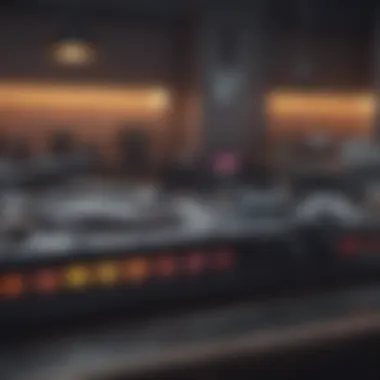
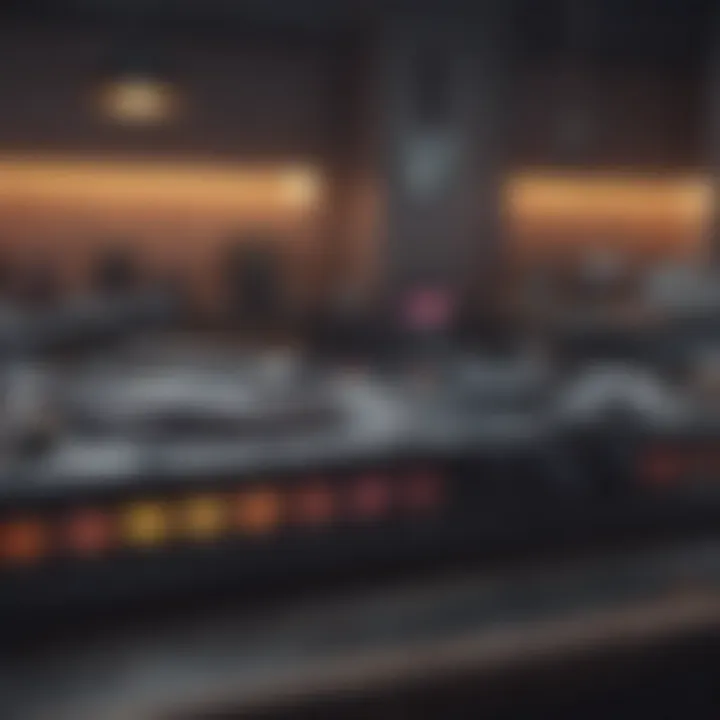
The path of an indie artist often resembles a double-edged sword. While the indie music scene offers a wealth of creative freedom and the chance to express one's unique voice, it also presents various obstacles that can impede an artist's journey. This section will delve into the substantial challenges new indie artists encounter, emphasizing financial constraints and the complexities of navigating the industry landscape. Ultimately, understanding these challenges is not merely academic; it can provide insights for aspiring musicians and enthusiasts alike.
Financial Constraints
One of the most pressing issues that indie artists grapple with is financial constraint. Starting a music career requires substantial investment in various areas such as studio time, equipment, marketing, and distribution.
Many artists find themselves in a tight spot, often funding their endeavors from personal savings or side jobs. For instance, an artist might sell handmade merch or set up a crowdfunding campaign on platforms like Kickstarter to gather support. These financial hurdles can lead to stress, making it tough to focus on creativity.
"Music must be life—it's like a drug. But having no funds can really put a damper on creativity."
- Anonymous Indie Musician
Key Financial Challenges Include:
- Recording Costs: Securing professional studio time can start from hundreds to thousands of dollars per project.
- Marketing Expenses: Without backing from a big label, investing in social media ads or promotional campaigns can strain an already limited budget.
- Touring Costs: Setting out on a tour, even a small one, can become quite costly when factoring in travel, accommodation, and food expenses.
Artists must learn to prioritize and sometimes compromise on their visions due to money constraints. Yet, it’s these very struggles that often inspire the raw and relatable music that indie artists produce, reflecting their realities.
Navigating the Industry Landscape
The indie music landscape is notoriously complex and can often feel like a maze for new artists. Understanding how to effectively maneuver through this world is crucial for anyone looking to make a name for themselves.
In the traditional music industry, major labels often dictate trends and manage artists’ careers. Conversely, indie artists typically work as their own managers, sometimes wearing multiple hats: promoter, agent, and social media manager, to name a few. This autonomy can be both liberating and burdensome.
Elements to Consider When Navigating the Landscape:
- Networking: Building relationships within the indie community can open doors. Attending local shows, joining online forums, or even engaging with artists on platforms like Reddit can be extremely beneficial.
- Understanding Rights: Knowing one’s rights regarding music distribution, streaming, and royalties is paramount. Many indie musicians often miss out on revenue simply because they’re unaware of their entitlements.
- Leveraging Technology: Utilizing digital tools for promotion and distribution can help indie artists gain a foothold in the market. Platforms such as Bandcamp and SoundCloud allow for independent distribution, but each comes with its own learning curve.
In summary, although facing financial constraints and navigating this intricate industry can certainly be daunting, many artists take the challenge head-on. Those who persist and adapt often find their footing, contributing unique, thought-provoking music to the landscape—something that sets indie artists apart in the modern era.
Indie Artists and Social Commentary
In the modern fabric of music, indie artists play a significant role—not just in terms of melody and rhythm, but also as voices of social change. This section delves into the essential connection between indie music and social commentary. Many listeners resonate with the authentic messages embedded in tracks, making the analysis of these themes crucial for understanding how indie artists contribute meaningfully to current dialogues about social issues.
Addressing Social Issues through Music
Indie musicians often choose to shine a spotlight on pressing social issues through their art. This is not merely a trend but stems from a deep-rooted conviction to engage with the world around them. By addressing matters like systemic inequality, mental health, environmental degradation, and human rights, they tap into shared experiences that resonate with diverse audiences.
For example, artists like Hozier with his powerful track "Take Me to Church" openly critique societal norms regarding sexuality and religion, urging listeners to reflect on these issues deeply. This kind of engagement pushes listeners to think critically, often prompting them to take action or align themselves with certain movements.
In essence, addressing social issues empowers artists to forge emotional connections with their audience. It is a bridge they build, where music becomes not just entertainment, but a catalyst for change—a medium that prompts discussions that might otherwise remain unspoken.
Creating Awareness and Activism
Indie artists also play a crucial role in creating awareness and activism through their sound. They have a unique ability to blend storytelling with personal narratives, allowing their songs to carry potent messages that echo real-life experiences of many listeners.
An example can be seen in how artists such as Billie Eilish take on themes of mental health and body image in their writing. By sharing their struggles, these artists frame discussions about well-being that might otherwise be stigmatized.
Moreover, social media facilitates this activism. Platforms like Facebook and Reddit enable indie artists to rally their fans for important causes, turning followers into advocates. Many musicians now actively promote awareness campaigns for climate change or social justice through their platforms, merging music with purpose seamlessly.
It is the heart's language that often bridges the gaps left by traditional media on social issues. Indie artists, with their grassroots connection, are effectively weaving activism into their songs.
To wrap up, indie artists are not just creators of music; they are also meaningful contributors to social discourses. By addressing societal challenges and fostering awareness, they empower listeners and encourage a culture of activism through melody. This two-way relationship between artist and audience is what keeps the spirit of indie music alive—raw, genuine, and socially conscious.
The Future of Indie Music
The landscape of indie music is ever-evolving, with new artists continuously pushing boundaries and challenging norms. Understanding the future of indie music is crucial, as it provides insights into how these musicians reshape not just their careers but the entire music industry. The rise of new technologies, shifting audience preferences, and an emphasis on sustainability paint a vibrant picture of what lies ahead.
Emerging Trends to Watch
The future of indie music is brimming with trends that can alter the way we perceive and experience music. Some significant trends to keep an eye on include:
- Genre Fusion: It’s becoming common to see artists blending different genres, creating unique sound tapestries. Imagine a fusion of folk with electronic beats or punk rock infused with classical elements. Such innovations not only widen the audience reach but also inspire collaboration between artists from seemingly disparate genres.
- DIY Culture: The do-it-yourself ethos continues to thrive, empowering artists to produce, promote, and distribute their music independently. More musicians are opting for home studios, which enhances their creative freedom and helps keep production costs low. The quality of home recordings has significantly improved, making it easier for indie musicians to compete with mainstream acts.
- Localism: Many artists are focusing on promoting their local scenes. By connecting with local venues, businesses, and communities, indie musicians are building strong support networks. This provides a sense of belonging for audiences and encourages the growth of regional music identities.
"As artists focus on local narratives and communities, they not only foster stronger connections with their fans but also enrich the cultural fabric of their surroundings."
- Interactive Experiences: The integration of technology into live performances is changing the game. More artists are experimenting with augmented reality and immersive video experiences, making each concert a unique spectacle. This not only elevates the auditory experience but also engages diverse senses, drawing audiences in like never before.
Sustainability and the Indie Movement
As the world becomes increasingly aware of ecological issues, the indie music community is responding with a strong commitment to sustainability. This aspect of the indie movement is shaping its future fundamentally.
- Eco-Friendly Practices: Many indie artists are making concerted efforts to adopt greener practices, whether that's through using sustainable materials for merchandise or organizing eco-conscious tours. For example, artists like Jack Johnson have long been advocates for environmental causes, encouraging fans to partake in eco-friendly initiatives.
- Conscious Consumption: The narrative around music consumption is changing. Fans are gravitating towards purchasing vinyl records or attending local shows instead of consuming music through mainstream, corporate channels. This shift promotes a slower, more deliberate engagement with music while supporting artists directly.
- Community Engagement: Sustainability isn’t just about the environment; it also entails fostering community. Many indie artists are increasingly involved in social causes, raising awareness through their music, and collaborating with local organizations to promote environmental stewardship.







